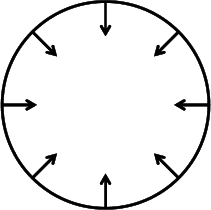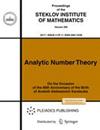关于能源集中问题
IF 0.4
4区 数学
Q4 MATHEMATICS
Proceedings of the Steklov Institute of Mathematics
Pub Date : 2023-12-20
DOI:10.1134/s0081543823040077
引用次数: 0
摘要
摘要 我们讨论了众所周知的能量集中问题,它是强爆炸或膨胀活塞问题的逆问题。通过一些物理实例,我们表明,在一定条件下,如果聚焦过程中涉及一定的力,就可以实现任何数量能量的集中。首先,这适用于万有引力及其在相对论问题中的表现,并考虑了粘度和热传导。本文章由计算机程序翻译,如有差异,请以英文原文为准。

On the Problem of Energy Concentration
Abstract
We discuss the well-known problem of energy concentration, which is the inverse of the strong explosion or the expanding piston problem. Using a number of physical examples, we show that under certain conditions and with certain forces involved in the focusing process, one can achieve the concentration of any amount of energy. First of all, this applies to the gravity force and its manifestation in problems of relativity theory with viscosity and heat conduction taken into account.
求助全文
通过发布文献求助,成功后即可免费获取论文全文。
去求助
来源期刊

Proceedings of the Steklov Institute of Mathematics
MATHEMATICS, APPLIED-MATHEMATICS
CiteScore
0.90
自引率
20.00%
发文量
24
审稿时长
4-8 weeks
期刊介绍:
Proceedings of the Steklov Institute of Mathematics is a cover-to-cover translation of the Trudy Matematicheskogo Instituta imeni V.A. Steklova of the Russian Academy of Sciences. Each issue ordinarily contains either one book-length article or a collection of articles pertaining to the same topic.
 求助内容:
求助内容: 应助结果提醒方式:
应助结果提醒方式:


